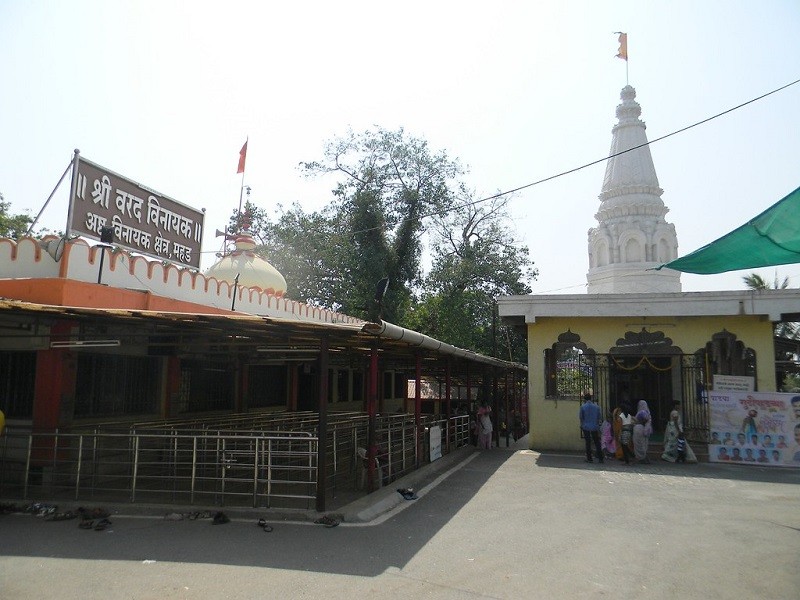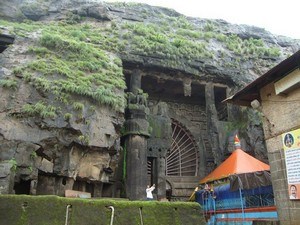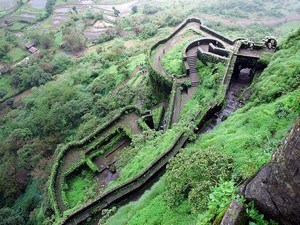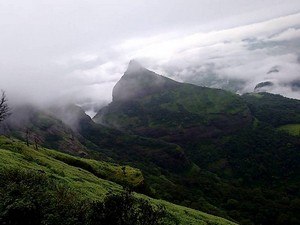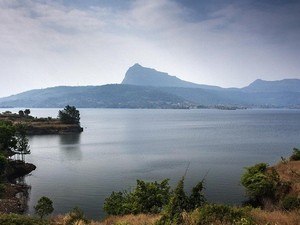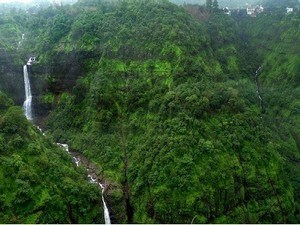Varad Vinayak Temple - Mahad, Lonavala - Timings, Festivals, History, Darshan, Pooja Timings
Photo Credit: Flickr
 India | Maharashtra | Lonavala
India | Maharashtra | Lonavala
 #24 of 24 Places to Visit in Lonavala
#24 of 24 Places to Visit in Lonavala
 Distance (From Lonavala): 20 Kms
Distance (From Lonavala): 20 Kms
 Trip Duration (Including Travel): 4 Hours/Half Day
Trip Duration (Including Travel): 4 Hours/Half Day
 Transportation Options: Bus / Cab
Transportation Options: Bus / Cab
 Travel Tips: None
Travel Tips: None
About Mahad Varadavinayak Temple
At a distance of 17 Km from Karjat, 20 Km from Lonavala, 88 Km from Pune, and 74 Km from Mumbai, the Varad Vinayak Ganpati Temple, also known as Mahad Ganpati Temple, is a Hindu temple situated in Mahad village near Khopoli in the Raigad District of Maharashtra, India. This temple is dedicated to Lord Ganesha, one of the most venerated deities in Hinduism. It is the seventh temple in the Ashtavinayak series, which is visited during the Ashtavinayak Darshan Tour in Maharashtra. The other Ashtavinayak Temples in Maharashtra include Moreshwar in Morgaon, Ballaleshwar in Pali, Maha Ganapati Temple in Ranjangaon, Siddhivinayak in Siddhatek, Chintamani in Theur, Girijatmaj in Lenyadri, and Vighneshwar in Ozar. This temple is regarded as one of the most sacred places to visit as part of the Lonavala pilgrimage packages.
History of Mahad Varadavinayak Temple
The idol at the Varad Vinayak Mahad Ganpati Temple is a Swayambhu murti, discovered in a submerged state in the nearby lake in 1690 AD by Shree Dhondu Paudkar. For a period, this idol was housed in a temple dedicated to a goddess. The construction of the current temple is attributed to Peshwa General Ramji Mahadev Biwalkar, who is believed to have built it in 1725 AD.
Mythology of Mahad Varadavinayak Temple
According to the legend, during a hunting expedition, Rukmaganda visited the hermitage of Rishi Vachaknavi. Upon seeing the handsome prince, the Rishi's wife, Mukunda, fell in love and requested him to satisfy her desires. The honorable prince, however, firmly declined and departed from the ashram. Heartbroken, Mukunda became lovesick. In response to her distress, King Indra assumed the guise of Rukmaganda and engaged in a romantic encounter with her. As a result, Mukunda became pregnant and gave birth to a son named Gritsamada.
Upon growing up, Gritsamada cursed his mother upon discovering that Rishi Vachaknavi was not his biological father. In retaliation, Mukunda cursed him to father a demon. At that moment, a divine voice revealed that Gritsamada was, in fact, the son of Indra. However, it was too late to reverse the curses, and Mukunda was transformed into the Bhor plant. To liberate himself from his mother's curse, Gritsamada undertook penance for Lord Ganesha in the Pushpak forest. Pleased with Gritsamada's devotion, Lord Ganesha granted him a boon that he would have a son who could only be defeated by Lord Shiva. Gritsamada also requested Ganesha to reside there permanently and sought knowledge of Brahma. He constructed a temple in that location, and the Ganesha idol established there is known as Varadavinayaka. Today, this forest is referred to as Bhadraka.
Architecture of Mahad Varadavinayak Temple
The Mahad Ganpati Temple is essentially a math, characterized by its simplicity and tiled roof. The temple's dome rises to a height of 25 feet and is topped with a golden kalasha featuring a carving of a Nag. Inside the temple, there are two idols: one located outside the sanctum and the other within it. The sanctum itself is constructed from stone and is adorned with intricately carved stone elephants.
The Varad Vinayak idol is Swayambhu, meaning it is self-manifested. This idol faces east with its trunk positioned to the left. Lord Ganesha is referred to as Varad Vinayaka here, as he is believed to grant the wishes of his devotees. Within the sanctum, stone idols of Riddhi and Siddhi are also present. An oil lamp in this shrine has reportedly been burning continuously since 1892. Additionally, the temple houses the idols of Mushika, Navagraha Devatas, and Shivalinga. On the northern side of the temple, a Gomukh can be found, from which holy water flows, while a sacred pond is located to the west of the temple.
Festivals of Mahad Varadavinayak Temple
Ganesh Chaturthi is a significant festival celebrated at the Mahad Varadvinayak Temple. Occurring in August or September, this five-day festival spans from Bhadrapad Shudh Pratipada to Panchami and honors the birth of Lord Ganesha. The festival is characterized by lively decorations, devotional songs, and special pujas. Another notable celebration is Maghi Utsav, which takes place during the Hindu month of Magha (January/February) and represents the rebirth of Lord Ganesha. The temple also hosts vibrant celebrations for Krishna Janmashtami, and Dusshera.
Dress Code & Other Restrictions of Mahad Varadavinayak Temple
Mahad Ganpati Temple does not enforce a strict dress code; however, it is advisable to wear modest attire that covers the upper arms and legs as a mark of respect. Men are encouraged to wear a dhoti or pajama along with an appropriate upper garment, or to wear formal trousers and shirts. Women may choose to wear a saree, half saree, or chudidhars. It is recommended to avoid modern clothing such as mini-skirts, shorts, and sleeveless tops while visiting the temple.
Non Hindus are generally not allowed inside the main sanctum sanctorum of the Varad Vinayak Temple. However, they can often appreciate the temple's architecture and surroundings from outside.
Mahad Varadavinayak Temple Timings
Monday: 5:30 AM - 9 PM
Tuesday: 5:30 AM - 9 PM
Wednesday: 5:30 AM - 9 PM
Thursday: 5:30 AM - 9 PM
Friday: 5:30 AM - 9 PM
Saturday: 5:30 AM - 9 PM
Sunday: 5:30 AM - 9 PM
Mahad Varadavinayak Temple Entry Fee
Entry is Free
Best Time to Visit Mahad Varadavinayak Temple
The ideal period to visit Mahad Ganpati Temple in Pali is between August and February, as the weather during this time is pleasant and conducive for temple exploration. Those interested in experiencing the festivities should consider visiting during Ganesh Chaturthi, when the temple is adorned with flowers and lights, and various religious events are held during the festival. However, visitors should note that this is the peak season, leading to larger crowds. For a more tranquil experience, the monsoon months of July to September are suitable that offer a lush and vibrant landscape. It is advisable to avoid visiting the summer months due to the intense heat.
How to Reach Mahad Varadavinayak Temple
Mumbai Airport is the closest airport, located approximately 75 kilometers from the Varad Vinayak Temple. The nearest railway station is Khopoli, situated about 7 kilometers away from the temple, which offers regular train services from Karjat. Karjat Railway Station, located around 17 kilometers from the temple, serves as the nearest major rail hub, providing direct train connections to cities such as Mumbai, Ratnagiri, Sindhudurg, Hyderabad, Bhuj, Ahmedabad, Bidar, Delhi, Jaipur, Ajmer, Solapur, Indore, and Khopoli. Additionally, the temple is easily accessible by bus from other significant towns, including Khopoli, Mahabaleshwar, Karjat, Alibag, and Shivthar Ghal.



